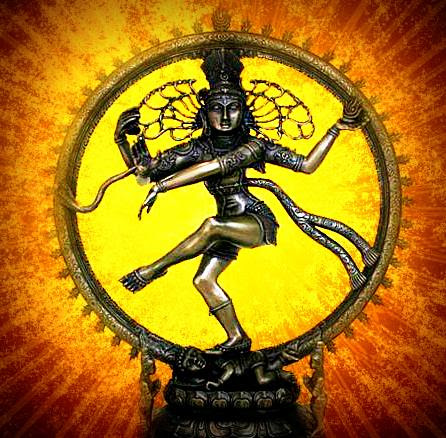
|| तत्वबोध -- 40,41||
Athma lakshaNam in TB-40 (ends!) & TB-41 Begins
So we have muKya vRththi (straight forward meaning); gauNa vRththi (when we deliberately use an adjective to IMPLY something different); and the 3 types of lakshaNa vrThthi, namely jahalllakshaNam (a word is replaced with a different word), ajahalllakshaNam (the spoken or written word is retianed and an additional word is brought in to complete the menaing), jahadhAjahlllakshaNam (where the root meaning is kept and the limitation is given up).
Upanishaths explain the NON-EXPLAINABLE brmhan (or the Athma or the jIva, or the caithanyam..) by using the jahadhAjahlllakshaNam.
This is where the sath chith Anadham is explained properly by the guru and (hopefully) correctly understood by the Student.
सत् sath किम् kim? काल kAla त्रयेऽपि thrayE api तिष्टति thishtathi इति ithi सत् sath |TB-41|
So the student after being backed into a corner, finally revealed the DEFINITION of AthmA by thr guru.. Whatever he thought himslef to be.. the guru said.."No dice..!"
He naturally asks (burning with aniticpation and curiosity) what then is this AthmA..
The guru replies sath chith Anadha svarUpa: and now the student asks one queation at a time for each part of the definition.
First of course is: sath kim? In other words "hey guro! what is this sath you are mentioning?" (Remeber the common parlance translation of sath is Existence and by using the upper case E the author thinks that he has distinguished "e"xistence from "E"xistence.!)
Here our guru gives the upanishadhic definition of sath.
He says " ithi sath = that which is truly existent thishtathi = (is the one) which stands (unchanged) thrayE api = in all the three periods of kAla = time (which is past, present, and future).
Restated, sath is that which stood unchanged in the past. stands unchanged in the present.. and will stand the future onslaughts of time as well.
As this point, we humans have seen nothing but changes in our lives.. since birth till now.. we see new ones coming and older ones are going
So we have muKya vRththi (straight forward meaning); gauNa vRththi (when we deliberately use an adjective to IMPLY something different); and the 3 types of lakshaNa vrThthi, namely jahalllakshaNam (a word is replaced with a different word), ajahalllakshaNam (the spoken or written word is retianed and an additional word is brought in to complete the menaing), jahadhAjahlllakshaNam (where the root meaning is kept and the limitation is given up).
Upanishaths explain the NON-EXPLAINABLE brmhan (or the Athma or the jIva, or the caithanyam..) by using the jahadhAjahlllakshaNam.
This is where the sath chith Anadham is explained properly by the guru and (hopefully) correctly understood by the Student.
सत् sath किम् kim? काल kAla त्रयेऽपि thrayE api तिष्टति thishtathi इति ithi सत् sath |TB-41|
So the student after being backed into a corner, finally revealed the DEFINITION of AthmA by thr guru.. Whatever he thought himslef to be.. the guru said.."No dice..!"
He naturally asks (burning with aniticpation and curiosity) what then is this AthmA..
The guru replies sath chith Anadha svarUpa: and now the student asks one queation at a time for each part of the definition.
First of course is: sath kim? In other words "hey guro! what is this sath you are mentioning?" (Remeber the common parlance translation of sath is Existence and by using the upper case E the author thinks that he has distinguished "e"xistence from "E"xistence.!)
Here our guru gives the upanishadhic definition of sath.
He says " ithi sath = that which is truly existent thishtathi = (is the one) which stands (unchanged) thrayE api = in all the three periods of kAla = time (which is past, present, and future).
Restated, sath is that which stood unchanged in the past. stands unchanged in the present.. and will stand the future onslaughts of time as well.
As this point, we humans have seen nothing but changes in our lives.. since birth till now.. we see new ones coming and older ones are going
.